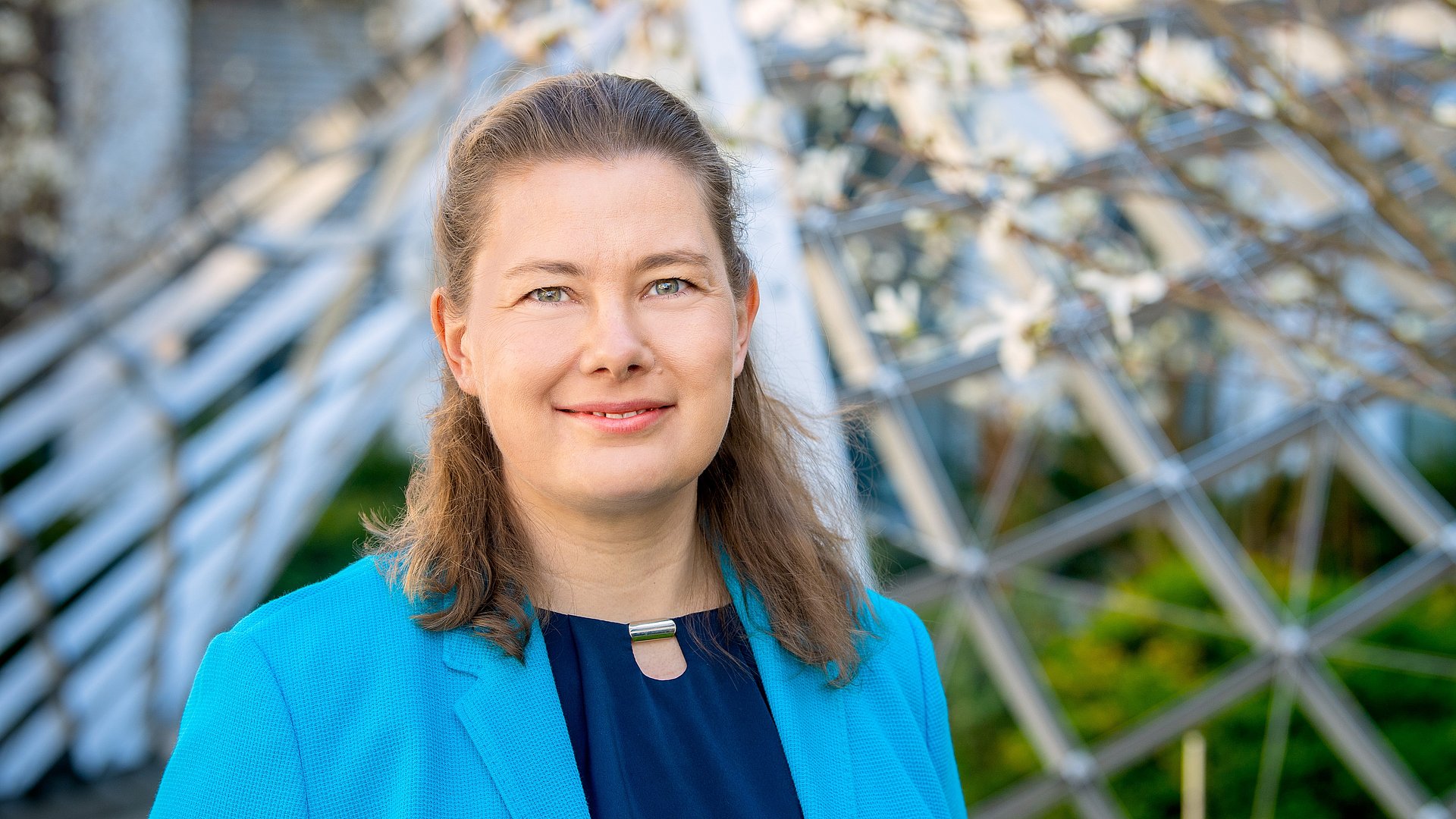Minimizing the use of antibiotics without compromising animal welfare: Julia Steinhoff-Wagner, Professor of Animal Nutrition and Metabolism at the Technical University of Munich (TUM), is working on a new research project to ascertain how this can be achieved in the field of poultry farming. In this interview, she explains how antibiotic use relates to animal health and nutrition.
 A. Heddergott/TUM
A. Heddergott/TUM A lot of research has already been done on antibiotic resistances. What are you investigating in your current project?
We want to explore how up-to-date scientific knowledge on antibiotic minimization, animal health and the spread of resistance can be transported into practice. In the first step, we collect the current state of research regarding the minimization of the use of antibiotics in poultry farming. We will then test which concepts work the best for the farmers and where improvements are necessary. This is a so-called model and demonstration project for animal protection, which primarily serves the transfer of knowledge.
What successful examples of antibiotic minimization are you looking at?
Cleaning and disinfection are key factors in successfully preventing the spread of pathogens between groups of animals. The livestock density plays another role. If more space is available, the bacterial load is lower - which is something we all learned during the pandemic: keeping more of a distance helps. In addition to this, animals that are purchased from different farms shouldn't mix. If they are, the situation will be similar to that with which we are familiar at kindergartens: when children from different families mix, they get sick more often because of the variety of their microorganisms. This is less relevant to poultry, however, as in most cases, all the animals come from just one supplier. The most important starting point for prevention is animal health. Animals that are adequately fed and live in an environment without excessive exposure to pathogenic germs and stress can easily handle low germ loads. If the animals do not get sick in the first place, they will not need antibiotics.
What are the challenges in the practice of poultry farming to implement these concepts?
In the case of pigs and calves, studies have demonstrated that farmers are often unable to carry out certain activities and potential improvements due to a lack of time. Also, there are things that they are unable to influence. This includes the health of the purchased animals as well as the feed quality, which is increasingly variable due to climate change. With natural products such as these, it is difficult to guarantee a consistently high level of quality. This is an area in which climate change is set to bring further challenges. There is also the possibility of problems not actually being noticed - after all, everyone has heard of operational blindness. In our new project, we are investigating which concepts work in practice in poultry farming.
How does antibiotic resistance develop and spread?
With respect to poultry, there are different pathways. In one research project we were able to demonstrate that the resistant microorganisms were transferred from the parents to the chicks, and arrive at the farm with them. In the area of the agricultural operations, however, they can also transfer around the animals through the water pipelines and the fodder if the cleaning is inadequate. Resistant germs are particularly prone to hide in the pipelines. This can be prevented by using the "in and out" method which is widespread in Germany, and in which all the animals in a compartment or a barn or the entire herd are only ever moved from one place to the next simultaneously. If the barn is empty in the time between its use by the groups of animals, it is possible for everything, including the pipeline systems, to be cleaned and disinfected. If germs find their way into the herd and the animals are sick, farmers are obliged by the Animal Welfare Act to provide them with treatment. Due to the large livestock holdings in the area of poultry farming, all of the animals usually have to be treated. Resistant germs then have a selective advantage. They are able to survive their contact with the antibiotics and continue to spread.
Which role do antibiotics play in the field of poultry farming?
Poultry farming has been part of the government's antibiotics monitoring program since 2014. Since then, the greater levels of awareness for the issue have helped reduce the use of antibiotics in fattening poultry. Despite this, their overall use remains higher in comparison with other livestock species. Otherwise, there is a risk that antibiotic resistance will be transferred to pathogens relevant to humans. Drugs used to treat these diseases could then lose their effectiveness. Every effort must be made to ensure that these remain available to us.
About the person
Prof. Julia Steinhoff-Wagner
Prof. Julia Steinhoff-Wagner dedicates her research at the Professorship of Animal Nutrition and Metabolism to the analysis of processes in livestock farming with a holistic approach. Her primary goal is to understand and evaluate the cycles from feed production to animal excretions comprehensively. In doing so, her particular focus is on challenges in the area of more sustainable feed and food production along the entire value chain. This includes particularly considerations of animal welfare and consumer protection.
- The German Federal Ministry of Food and Agriculture is providing funding for the project for the "Adaptation of an existing management concept to minimize the use of antibiotic and the spread of resistance in poultry farming with subsequent knowledge transfer" or MiniAbeR for short, as part of a modeling and demonstration project on the topic of animal welfare. The project partner is Dr. Celine Heinemann, Institute of Animal Science, University of Bonn.
- The Hans Eisenmann Forum for Agricultural Sciences links around 30 university chairs at the TUM that are oriented towards agricultural sciences. It provides a platform for communication within the university, with external partners from various fields of agricultural science and economics as well as with society.






